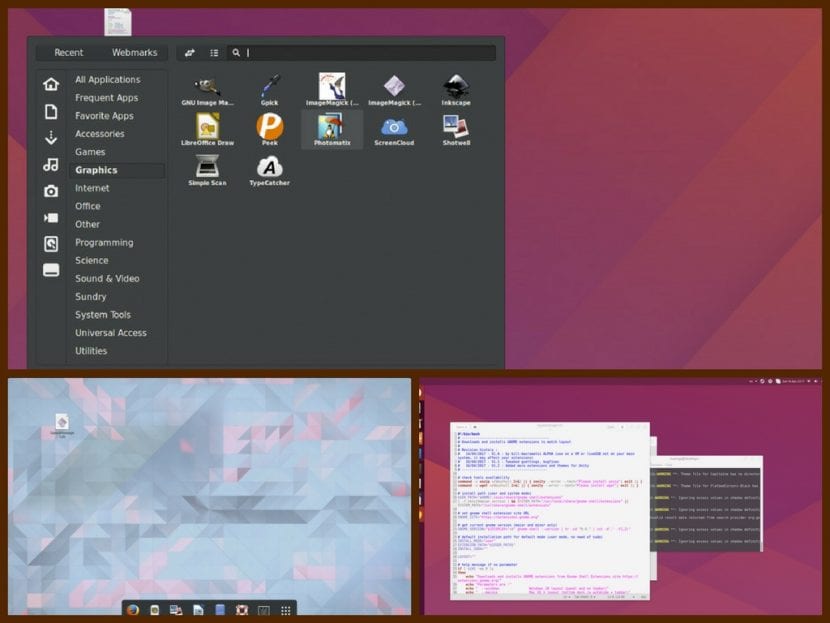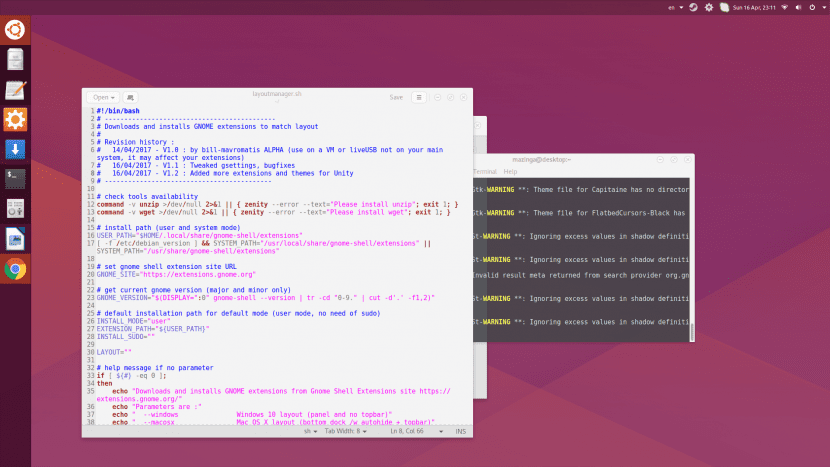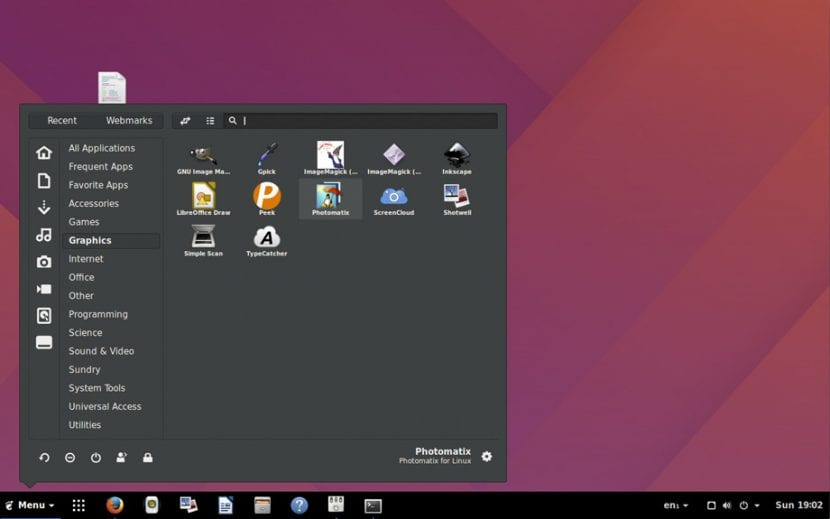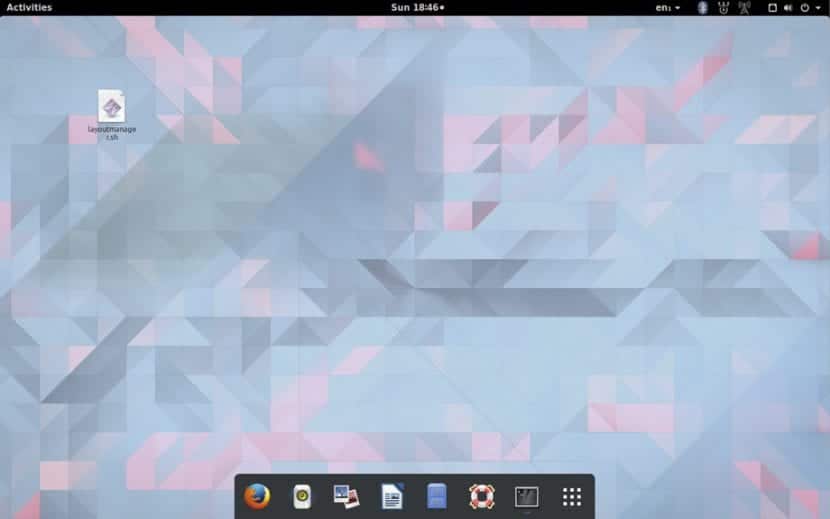
The standard GNOME Shell interface has a minimalist and quite efficient design, but to give it a fresh look you don't have to install additional themes, just use a simple script.
GNOME Layout Manager is a new script currently under development that can completely transform the GNOME Shell to give it a look inspired by Ubuntu Unity, Windows, or Mac OS X.
While in the past we have written articles on how to make Ubuntu look like Windows 10, this script does not do anything that you cannot do manually. In other words, it automates the entire process of downloading GNOME extensions, as well as their configuration, installation and implementation of a theme for the GNOME Shell.
Unity

To make the GNOME Shell look like Ubuntu Unity, the GNOME Layout Manager downloads the following extensions and themes:
Extensions:
- dash to dock
- Top Icons Plus
- AppIndicator
- User Themes
- Hide Activities
- Frippery Move Clock
Themes:
- United (GTK + Shell) by @godlyranchdressing
- Humanity icons
Windows

To make the GNOME Shell look like Windows, the script uses the following extensions:
- Dash to panel
- Top Icons Plus
- AppIndicator
- GnoMenu
MacOS
Finally, to make the GNOME Shell look like Apple's Mac OS X operating system, the GNOME Layout Manager uses the Dash to dock, TopIcons Plus, and AppIndicator extensions.
Download and Install GNOME Layout Manager
The first thing to say is that the GNOME Layout Manager should work without problems in both Ubuntu and other distributions, including Arch Linux, Fedora, Manajaro or Antergos.
You can download the latest version of the script from Github, after which you must extract the zip file and move the script into your Home folder and proceed to execute it after giving it the proper permissions
Alternatively, you can run the following command in a Terminal window:
wget https://raw.githubusercontent.com/bill-mavromatis/gnome-layout-manager/master/layoutmanager.sh
To give it the relevant permissions, run the following:
chmod +x layoutmanager.sh
Then run the script from the command line and apply the desktop style you want to replicate.
For a macOS style, enter the following command:
./layoutmanager.sh --macosx
For an Ubuntu Unity style, enter the following command:
./layoutmanager.sh --unity
Finally, to replicate the appearance of Windows, you must use the following command:
./layoutmanager.sh --windows
For now there is no way to undo the changes or to restore the standard interface, but if you use the GNOME Tweak Tool you can easily disable the extensions that the script installs for you or even disable all the extensions with a simple click.
Source: OMGUbuntu

Hey, how do you migrate from a Linux version to a more modern one? Without breaking anything? Thanks…
Ivan Coba what do you think of this Dr. Rata